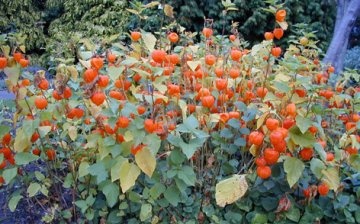Growing physalis
Physalis is a perennial plant in the nightshade family. But in the middle lane, the cultivation of physalis is practiced as an annual, since it does not tolerate cold winters. There are many varieties of this plant, including decorative, berry, vegetable and medicinal. Physalis fruit is a berry in an accrete cup that resembles a Chinese lantern. Ornamental types of physalis are often used for winter bouquets. The fruits of ornamental physalis species are inedible, but strawberry and vegetable physalis are delicious both fresh and processed.
Growing physalis resembles the cultivation of tomatoes, they belong to the same family. Seeds are sown for seedlings in late March - early April. First, the seedling box is covered with glass or plastic, creating a mini-greenhouse. When seedlings appear, the glass or film is removed, and when the seedlings get stronger, and they have several real leaves, the seedlings dive. Plants are planted in the ground when the threat of night frosts has passed.
Physalis forms sprawling bushes, so when planting, you need to leave a distance between seedlings of at least a meter. The plant does not need a garter, its stems, falling apart and touching the ground, give new roots, thereby increasing the intake of nutrients. Physalis is watered and fertilized in the same way as tomatoes. Naturally, you need to weed and loosen the plantings. The fruits are harvested in August.
Physalis often reproduces by self-seeding, in this case it is necessary to thin out the seedlings. But on these plants, the fruits often do not have time to ripen before the onset of frost, therefore, to get a good harvest, you still need to use seedlings.



